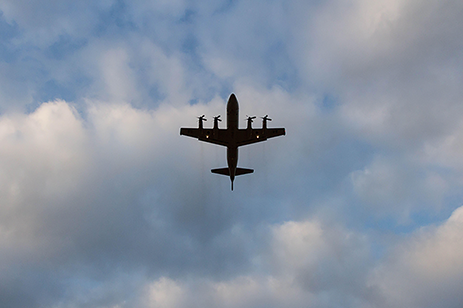
This video taken at ITC 2021 is showing a Telemetry Network System (TmNS) demo with Curtiss-Wright hardware.
Transcript
The system really demonstrates our implementation of the TmNS standard, IRIG 106 chapters 21 through 28 I believe. There's a couple of key features you get when you implement TmNS, the first being bi-directional communication. So what's important with TmNS is it's kind of an enhancement of traditional telemetry unidirectional communication. Typically in the air, you have a single predefined data stream going from the air down to the ground so with TmNS we kind of get more flexibility in our utilization of that spectrum. So some things we get with that is through the use of our transceivers and other TmNS capable hardware we can configure our hardware over an RF link from the ground, we have access to live test article measurements from the ground that's both real-time data as well as recorded.
We can also, with that implementation we can backfill any lost data in telemetry, so as we know the RF is really prone to multi-path and lots of data so for flight-critical information. We have the ability to identify, with the use of IADS, any drop data and backfill it into our live display in the control room. Moving on from that we have an implementation of quality of service - so that's assigning different priorities to different data sources so in a bandwidth-constrained data link, when there are multiple data paths that may overwhelm that width-constrained link, utilizing a certain hierarchy of priority of data sources we can ensure the highest-priority data gets there for anything else - that can be like voice or in the case of PC and backfill that important data we can get that first before it sends lower-priority data.
So an additional feature of that RF link communication is it's essentially an ethernet connection but wirelessly so with that, we can telnet directly into hardware in the air and that means we can directly configure hardware such as the DAU, the camera as well as even the transmitter. So with some of the displays over here, you can see that we're able to start a telnet session with hardware in the air from the ground and send commands to the transmitter, changing things like that center frequency of which it communicates query status like temperature. The last part we have is the ability to perform radio handoffs.
So right now we have our radios configured to all be communicating on a single-center frequency so instead of a single transmitter and receiver pair we now have all multiple radios able to access data in the air. So with a radio handoff, as say one radio is out of range of that air transceiver we can perform a handoff by reconfiguring the center frequency of transmission in the air to another ground station radio that may be in a better range. So as the aircraft moves across a large base or to a different base we can actually reconfigure the air radio and hand that communication off to another one, greatly increasing the range of communication and configurability during the flight test.